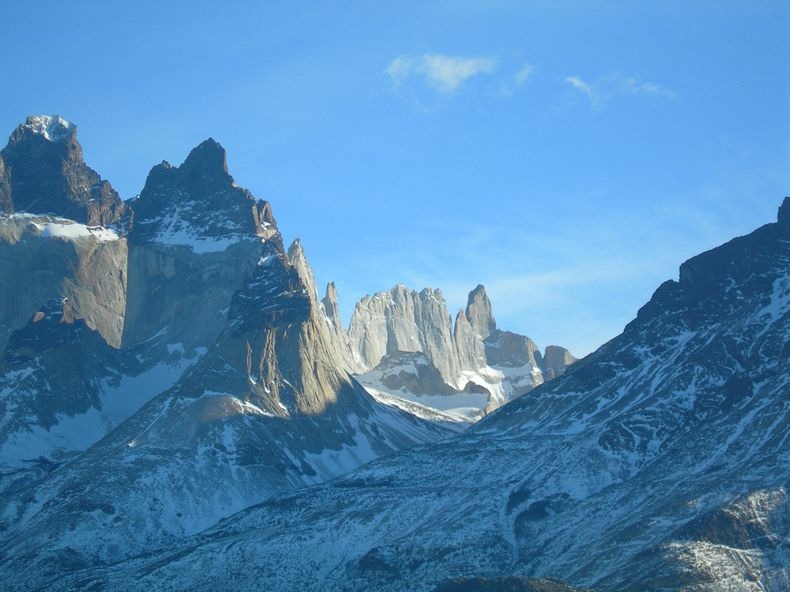2 190.109.171.235:8080 HTTP NOA Colombia (Medellнn) 190.109.171.235 28-jul-2012 12:40
3 190.249.172.230:8080 HTTP NOA Colombia (Medellнn) cable190-249-172-230.une.net.co 28-jul-2012 12:40
4 201.221.131.218:8080 HTTP NOA Colombia (Bucaramanga) 201-221-131-218.telebucaramanga.net.co 28-jul-2012 12:39
5 64.76.188.149:8080 HTTP NOA Colombia (Valle) 64-76-188-149.static.impsat.com.co 28-jul-2012 12:38
6 190.90.36.8:8000 HTTP ANM Colombia (Medellнn) 190.90.36.8 28-jul-2012 01:17
7 190.0.45.98:8080 HTTP NOA Colombia (Medellнn) Static-BAFibra190-0-45-98.epm.net.co 28-jul-2012 01:11
8 190.0.50.38:8080 HTTP NOA Colombia Static-BAFibra190-0-50-38.epm.net.co 28-jul-2012 00:58
9 201.232.104.7:8080 HTTP NOA Colombia (Medellнn) static-adsl201-232-104-7.epm.net.co 28-jul-2012 00:16
10 190.66.3.107:8080 HTTP ANM Colombia (Bogotб) 190.66.3.107 28-jul-2012 00:13
Spectacular Granite Spires at Torres del Paine
| |
| |
The centerpiece of the park is, of course, the three gigantic Towers of Paine. One of the earliest description of the area can be found in a book by Lady Florence Dixie published in 1880, where the British writer refered to the three towers as Cleopatra's Needles. She and her party were the first tourists to visit what is now called Torres del Paine National Park.
The Paine massif is actually a part of the eastern spur of the Andes located on the east side of the Grey Glacier, rising dramatically above the Patagonian steppe. The highest summit of the range is Cerro Paine Grande at an elevation of 2,884 m. The South Tower of Paine is about 2,500 m, while the Central Tower of Paine is about 2,460. There are other smaller summits including the Cuerno Principal, about 2,100 m, and Cerro Paine Chico at about 2,650 m.

Much of the geology of the Paine Massif area consists of black, Cretaceous sedimentary rocks, its strata showing complex folds resulting from tectonic deformation during the formation of the Andes. But these dark mountains are also streaked with pale granite, which formed when magma rose from the depths 13 million years ago, becoming trapped and slowly solidifying to form what is known as a laccolith. Glacial ice eroded the overlying rock exposing these gigantic granite monoliths that stand today.
Torres del Paine National Park is not just mountains and rocks. It’s an area of astonishing scenic beauty with snow-capped mountains, glaciers, rivers and lakes. The Grey, Tyndall and Balmaceda Glaciers are remains of once much more extensive system that retreated approximately 10,000 years ago. The evergreen forests of Verano extend to the west as far as the foot of the Andes mountains, which wise up to a treeless alpine zone. There are about 106 species of birds, some of which are endangered, such as Coscoroba Swan (Coscoroba coscoroba) and Darwin-Nandu (Pterocnemia pennata).
The national park is a popular hiking destination in Chile. More than 20,000 national and 40,000 international tourists visit the site annually. There are clearly marked and well maintained paths and many refugios which provide shelter and basic services. Camping is only allowed at specified campsites and wood fires are prohibited throughout the park.
Fire has been a recent threat. In 1985, a Japanese tourist started a fire that burned about 150 km² of the park. Then again in February 2005, a wildfire was ignited at Torres del Paine, when a tourist accidentally knocked his stove onto ground vegetation. The fire which lasted for about ten days, destroyed 155 km² of the park, including about 2 km² of native forest. In late December 2011, yet another fire burned 128 km² of the reserve, destroying about 36 km² of native forest.









Source
No comments:
Post a Comment